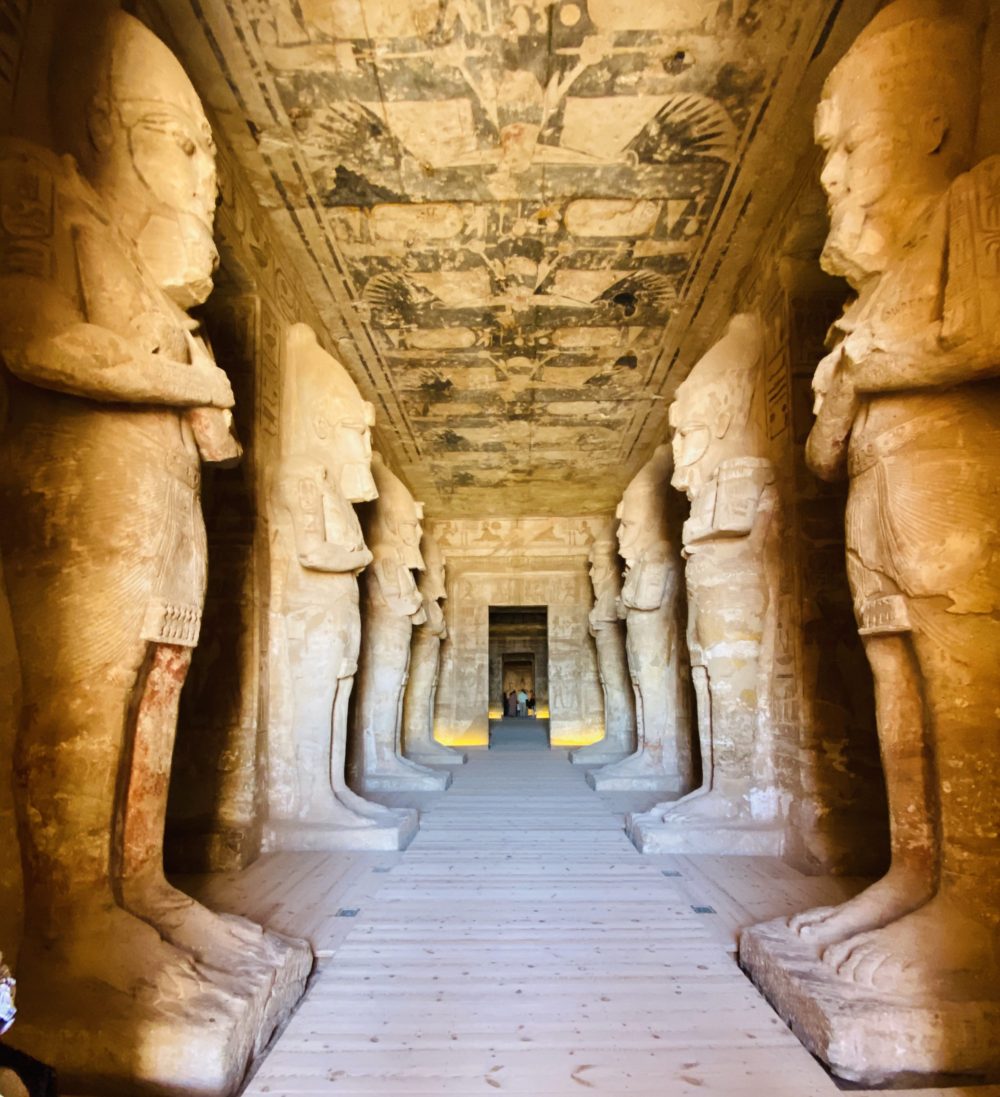The fear of eternity
2020.07.05
I look up at the giant statue of Ramses II from below. The muscular arm and the powerful calf, the gaze watching far of the statue are intriguing. The Temple of Abu Simbel was built by Ramses II and is a rock cave temple made of hollowed out sandstone, also known as “Nubian Ruins”. On the almost square facade, there is a statue of a giant god sitting on four chairs, one of which is Ramses II. Since I came to Egypt, my image of the Egyptian gods changed little by little, and I began to think that architecture began with the fear of human eternity.
Once inside the temple that is dyed in golden and pink, probably because of the color of sandstone, the space is designed to force visitors to pass by the statue of Ramses II, pass through three spaces, and reach the final space. I guess that the composition that converges into a small space as I go deep is because I think that a small place is suitable as a place to protect the king from fear.
永遠という恐怖
巨大なラムセス二世像を下から見上げる。筋肉が発達した上腕、力強いふくらはぎ、遠くまで監視するような眼差しは恐ろしい。アブシンベル神殿はラムセス二世によって建造されたもので、「ヌビア遺跡」とも呼ばれた砂岩をくり抜いた岩窟神殿だ。ほぼ正方形のファサードには四体の椅子に座った巨神像があり、その一体がラムセス二世である。エジプトに来てから、私のエジプトの神々に対するイメージは少しずつ変わり、人間の永遠に対する恐怖心から建築が始まったと考えるようになった。
神殿内部に入ると、砂岩の色なのだろうか、黄金色とピンク色に染まっている。ラムセス二世像の横を通り、三つの間を抜け、最後の空間にたどりつくように設計されている。奥へ行くに従って小さな空間へと収束される構図は、小さな場所こそが王を恐怖から守るべき場所としてふさわしいと考えてのことだろうか。
